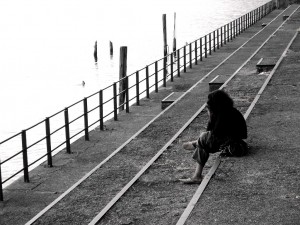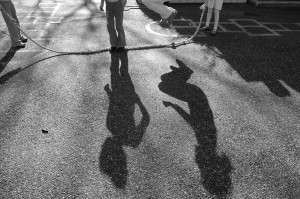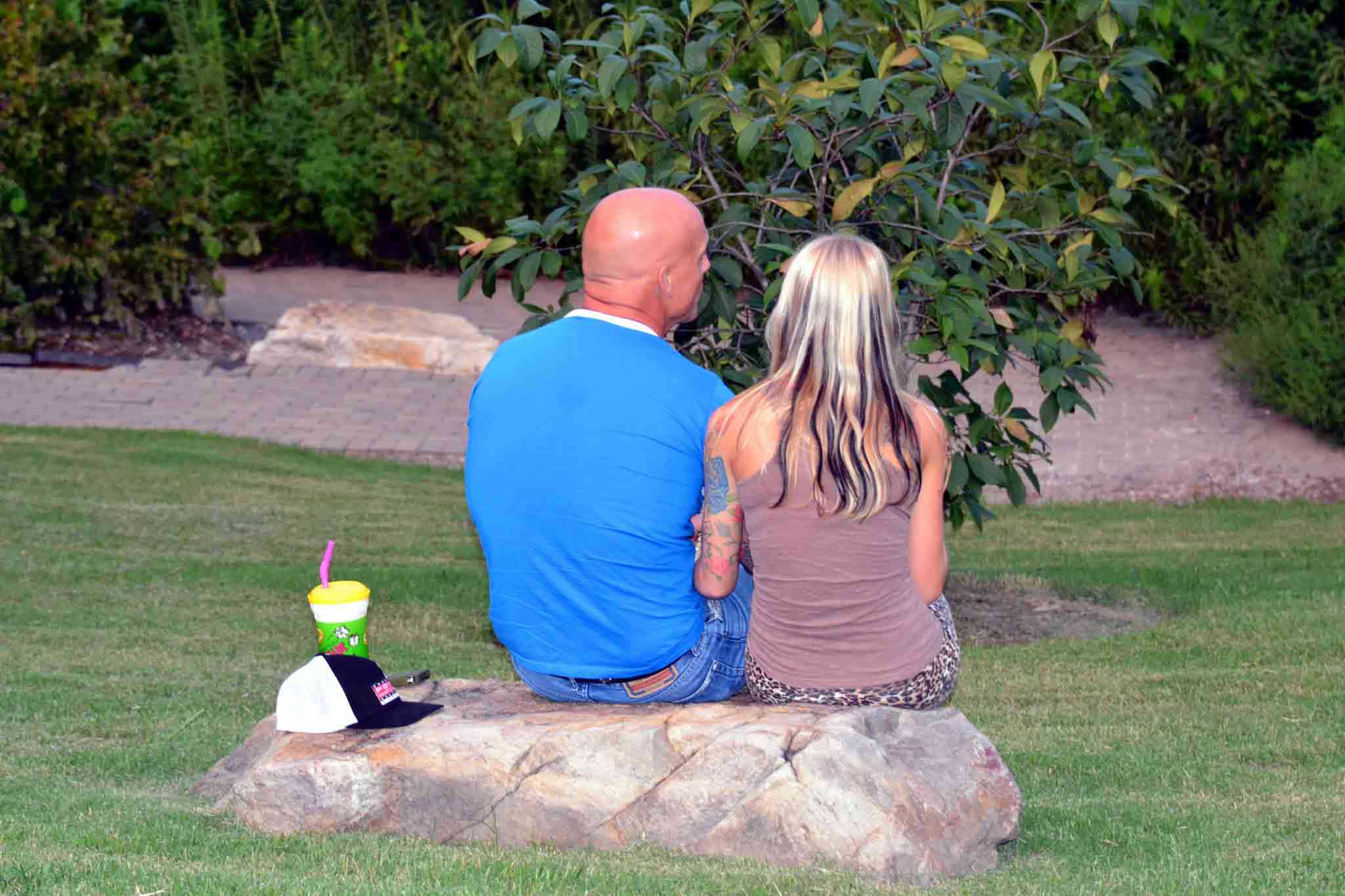 Rabbi Irwin Kula, in his book Yearnings (2006), uses the image of “dancing with uncertainty.”
Rabbi Irwin Kula, in his book Yearnings (2006), uses the image of “dancing with uncertainty.”
Kula resists being seduced by the illusion of 100 percent certainty and says he has come to accept assuredness as the “51 percent.” This allows the other 49 percent to remain very much alive and valued in a person, thereby maintaining a sense of wholeness. Kula believes that every decision is a partial and ever-evolving truth that embodies halacha, the Jewish idea of “pathing” a way forward – “the opposite of a fixed or stable law.”
This progressive “pathing” is a beautiful image of the therapeutic process. As Kula writes, “We can experience the yearning for certainty, and yet not let it consume us.” This image articulates the findings of neuroscience that I discussed in my previous article and it also connects us to the role that waiting plays in the Christian story that I discuss in this article.
Waiting in Faith or Fear?
The Judeo-Christian narrative offers such an invitation: to wait in uncertainty. It challenges us to live in the groaning tension of the in-between, that nonlinear wilderness known as “liminal space.” From the Israelites’ Exodus wandering, to Abram and Sarai’s longing for a promise, to the Magi’s starlight Epiphany journey, to the Apostle Paul’s desert dwelling after his blinding Damascus road encounter … to the interminable un-knowing of Holy Saturday, between Good Friday and Easter Sunday.
What our minds seem to find so overwhelming about liminality is that we interpret the apparent lack of movement or answers as a sign of God’s absence. Often this leads us to fear and then judge the tension, giving it an inordinate amount of power. With this mindset, waiting and uncertainty become arbitrary forces of suffering that desperately need to be tamed, instead of trusting that they might be sacred companions for the journey.
The Movement of Waiting
 So, what is the work of this uncertain waiting? What’s the point? Writer Sue Monk Kidd, in her book When the Heart Waits (1990), refers to it as the “womb” and “tomb” experiences of life. Waiting is meant to be an active, creative labor of making space for new life to incubate. The tension of waiting pushes the soul into a barren, emptying darkness that silences our vices of distraction and threatens to annihilate us – until we come to trust in the slow, fermenting process of change and renewal.
So, what is the work of this uncertain waiting? What’s the point? Writer Sue Monk Kidd, in her book When the Heart Waits (1990), refers to it as the “womb” and “tomb” experiences of life. Waiting is meant to be an active, creative labor of making space for new life to incubate. The tension of waiting pushes the soul into a barren, emptying darkness that silences our vices of distraction and threatens to annihilate us – until we come to trust in the slow, fermenting process of change and renewal.
The birth pains of waiting can feel like death – but it is death unto life. The metamorphosis that Dr. Daniel Siegel (see my previous article ) sees as developing a mind, is viewed by Kidd as the soul shedding its cocoon to sprout wings. And what does a butterfly do once it emerges? It waits some more, for its newfound wings to dry.
Two Types of Time
Kidd distinguishes between two kinds of waiting: living by time (chronos, which implies chronology, quantity, sequence) and living in time (kairos, which means being attentive to the ripening, opportune moment). It takes mindful presence and courage to live qualitatively in kairos time – something that allows us to embrace the uncertainty of “crisis” as also “opportunity.”
Kidd connects the Greek words krisis (crisis) and krino, the latter meaning “a separating.” In essence, the tension of waiting and uncertainty serves to sever a person from what Kidd calls “old ways and states of being.” Liminal waiting is a necessary movement in what psychology calls “individuation” by which a person arrives at a fuller sense of self by journeying through disorienting, fragmenting seasons.
The Emergence of New Life
The church calendar also marks this cycle of separation and emergence: between long stretches of so-called “ordinary time” are the liminal seasons of Advent and Lent, both fraught with fragile hope. And then they explode with life – incarnational and resurrection life.
An important role for Christian counseling is to help affirm the truer “you” that is separating and emerging in this growth process. It does this in part by identifying the ways you are fighting against it based on painful past experiences and relational patterns of distrust that are self-depleting.
An Invite to the Dance
What settles the mind and soothes the body, then, is often not the certainty of circumstantial answers, but the development of a more secure and mindful “self.” This is a self that is grounded in wait-and-see wisdom, and is receptive to embracing new things – rather than rigidly bracing itself for them.
Speaking as a Christian counselor, the mark of what I would call a “mindful heart” is simply this: a present awareness that is postured towards attentively listening, experiencing, and sharing a fuller life-together with others, with all of its sorrows and joys and beautiful imperfection. Whether the moment is playful or somber, a mindful heart seeks to make meaning and connections. It guards the present moment, ensuring that it is not lost and that I do not “lose my mind.”
So, when my two-year-old asserts her “me-do-it” attitude on the steps of a crowded bookstore, and my four-year-old opens a dance recital on a busy Seattle sidewalk … I quickly become aware of my ego’s urge to exert control, to close myself off to a moment brimming with life. But this unsettledness becomes a wakeful pin-prick of consciousness – an opening to the “plane of possibility.”
We Can Choose to Project or to Play
Let us return to the city scenes we started with in the first article in this series. Like so many moments, they are brief but full. They present a choice: to project or to play. By this I mean that I could have mindlessly “projected” my fatigue and insecurities onto my kids by fixing or scolding their behavior in public. Instead, their spontaneity cued me to pause attentively, and to embrace the welling “bottom-up” experience in me that needs to be heard and gently tended to – that longing to freely dance with my girls, mingled with the scarring fears of old expectations and judgments.
Christian Counseling Can Help You to Embrace Uncertainty
Are you feeling pressed with uncertainty and weary of waiting? A Christian counselor can help you to develop a more mindful, loving, and connected experience of yourself and others. I would welcome the opportunity to work with you, to discover the new possibilities waiting in your midst.
References
Kidd, S. M. (1990). When the Heart Waits: Spiritual Direction for Life’s Sacred Questions. San Francisco: Harper.
Kula, I. (2006). Yearnings: Embracing the Sacred Messiness of Life. New York, NY: Hyperion.
Siegel, D. J., & Solomon, M. (Eds.). (2013). Healing Moments in Psychotherapy (pp. 217-268). New York, NY: W.W. Norton & Company.
Photos
Girl waiting on steps photo: “Waiting … could be the hardest thing” by Magdalena is licensed by (CC BY 2.0); Kids playing shadows photo: “shadows” by aptmetaphor is licensed by (CC BY 2.0




